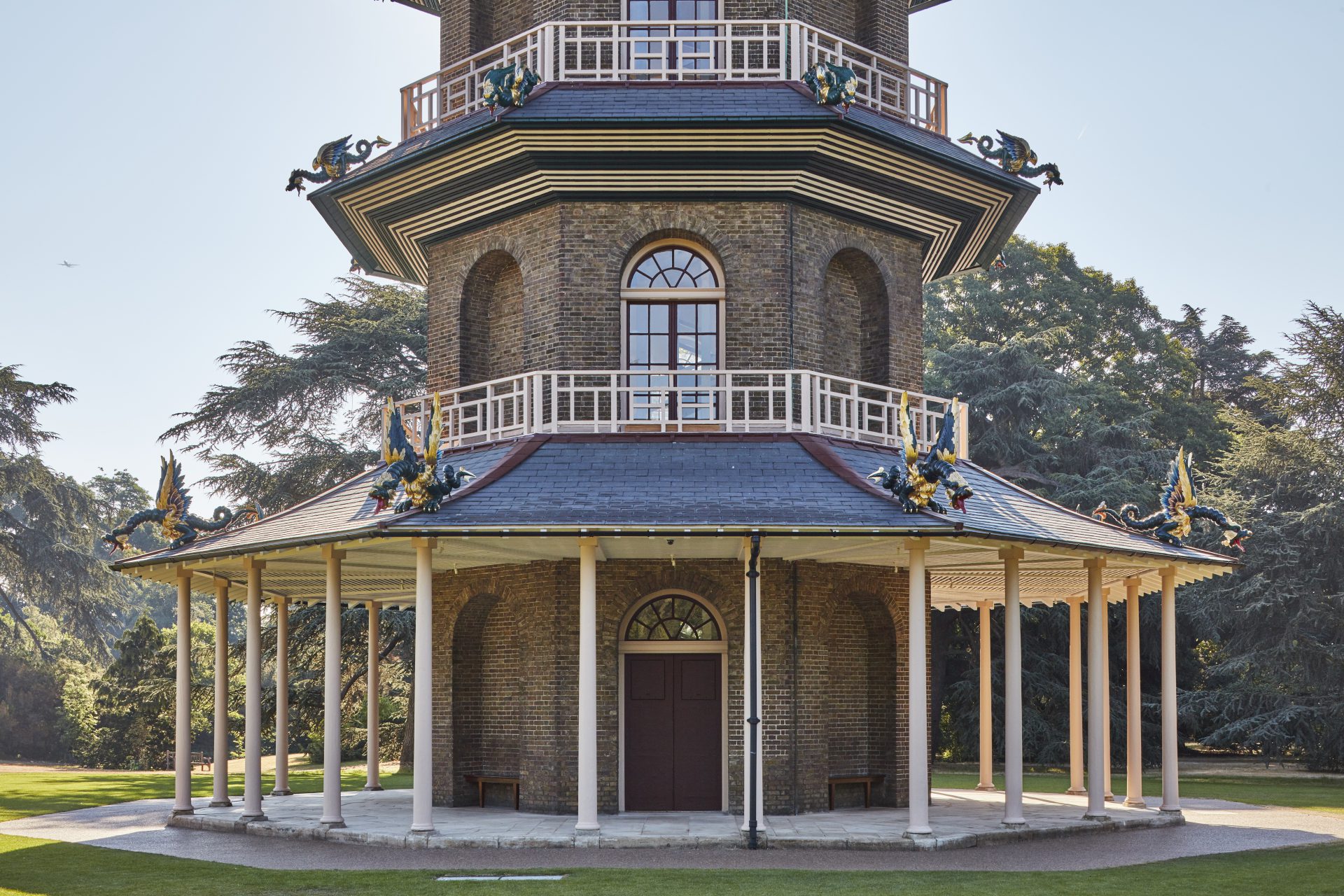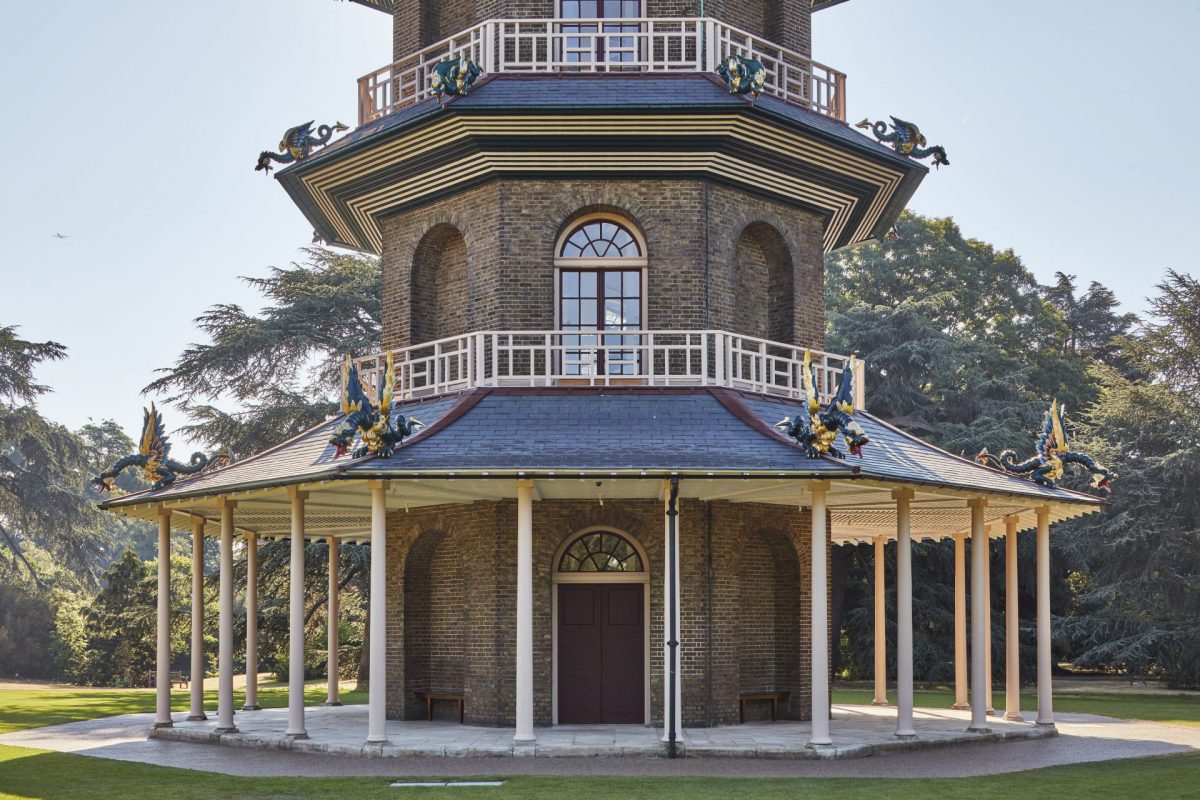The Great Pagoda at the Royal Botanic Gardens Kew, built in 1761-62, is one of the most important Chinoiserie-style building in Europe. It is a ten-storey brick tower, with octagonal roofs and geometric balconies rising in diminishing stages to a decorative finial. Throughout the history of the Pagoda there have been a variety of repairs, changes and redecoration works carried out. The 1784 repair works were to replace the lower roof finishes with slates and cooper and removal of the remaining dragon sculptures. In 1845 there were more repairs that included repointing the brickwork, replacing the finial pole and re-painting throughout.
The 2016 appearance of the building was a reflection of modern taste, deriving from a comprehensive redecoration of 1895, which applied a ‘pillar box’ red paint to almost all the external joinery elements. The last repainting works were carried out in 1989, around the time the building was closed to the public. During the subsequent years only basic repairs were carried out. At the start of this refurbishment process Austin-Smith:Lord conservation architects undertook a series of building fabric assessments to identify the current condition of the building.
Historic Royal Palaces’ objective was to return the building as closely as possible to its original appearance using all the historic evidence that was available. That aim guided many of the decisions that were made, from the use of traditional materials to the design and setting out of the dragons and the final colour scheme of the building and reinstated dragon sculptures.


